POR TIERRAS DE RIBADAVIA (The Land of Ribeiro)
October 2006
Select another language ![]()
![]()
|
amous since Roman
times, the region of Ribeiro appears to be well differentiated in the
middle Ages. Since then,
Ribadavia, capital of the region, has lived through
times of glory thanks to the wine of Ribeiro and the benefits derived from
their trade. The Ribeiro label supplied the tables of the secular and religious
nobility of half of Europe for more than a thousand years.
|
|
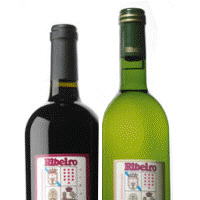 |
The region of Ribeiro, located in the western part
of the province of Ourense, is bounded by the rivers Miño, Avia and
Arnoia. It has special climatic conditions for growing grapes resulting
in some wines of excellent quality.
In our visit to this region we harbor in the guesthouse Pazos Hermos, located on the banks of the river Avia, in the district of Cenlle. |
|
|
|
Pazos Hermos has a privileged location in the center of this region, so
we
made visits to monasteries, contemplated interesting
villages and towns, where peace and tranquility is a gift, walked
along some routes of a network of walking trails, and visited some wine cellars.
|
![]()
|
One of the first visits that we made was to the Monasterio de Santa María de Oseira. Located in the municipality of San Cristovo de Cea, it was founded by Cistercian monks in 1137. This monastery was the religious and economic center of the entire area.
|
|
|
|
The monastery, also known as the "Galician Escorial", has been restored recently with excellent results by the monks, having received the Europa Nostra prize in 1989. It is one of the greatest monuments of these lands. In a guided tour we visited several parts inside the monastery as well as the gardens surrounding the building. |
![]()
|
The baking tradition of San Cristovo de Cea parallels the history of the Monastery of Santa Maria de Oseira, to the point that it was known as "La Villa del Buen Pan" (the village of the good bread), paradigm of their good quality and well-known, not only in the province, but throughout Galicia. |
|
|
The baking activity was known from the thirteenth century and was increasing in later times, leaving several records in chronicles of the Middle Ages. At present, the bakery is still the main activity with about twenty bread bakeries that produce a delicious bread, not just craft, but, as we see, even on an individual basis. Each neighbor charge its particular piece. The fact was that the bread we bought for lunch was devoured in a few minutes.
|
|
Pazos de Arenteiro is a village with medieval stone buildings, typical of the popular architecture in Galicia. In this town some of the most beautiful "Pazos" of Galicia have been preserved, but not in very good condition. The village was declared historical-artistic monument in 1985. The Avia and Arenteiro rivers come together in Pazos de Arenteiro, coursing between lush vegetation resulting in some spots of great beauty. There are some trekking trails well-maintained and marked.
|
|
|
Note: Clic HERE to see the image at its original size (1240 x 930 pixels). |
 |
TREKKING Promoted by the Mancomunidad Turística Terras do Avia there is a network of trekking trails throughout the area of Ribadavia. It is a network with multiple paths, well marked and cared for, that do not offer great difficulty. On this trip we made part of the route known as Senda do Arenteiro that goes from Pazos de Arenteiro to O Carballiño, with a branch going to Pozo dos Fumes where the river seems to be volatilised. |
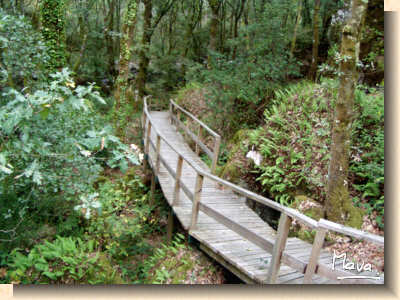 |
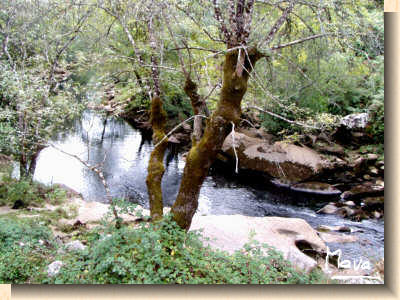 |
This route follows the course of Arenteiro River, which crosses at various points. There are lovely natural settings and places with so luxuriant vegetation that the sky is not visible. When the route goes parallel to the river, the reflection of its clean water adds to the lush greenery forming a set of incomparable beauty.
|
|
|
|
||
![]()
|
The region of Ribeiro includes a large area with more than 3000 hectares of vineyards under cultivation in terraces (socalcos), some of them built in the ninth century, supported by huge walls of granite stones that cover the layered mountainsides. Being in the heart of the wine region of Ribeiro we could not miss our visit to some of the wineries that are located in the vicinity of Leiro. |
|
The villages of the region adorn the landscape which is dotted with numerous vineyards ...
|
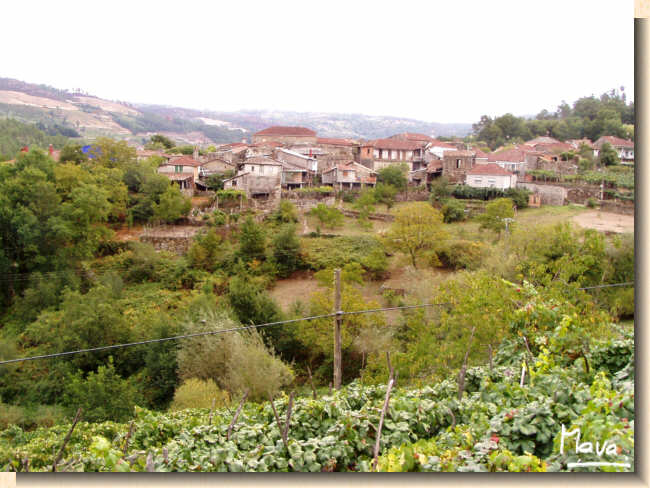 |
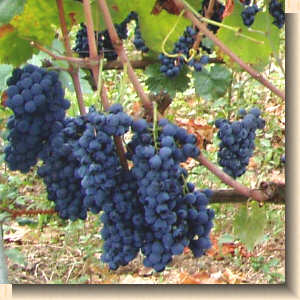 |
 |
... and,
as they were in full harvest, we visited some wineries and harvesters
(colleiteiros) and were able to see the grape treading the old
way, as well as wine cellars producing wine using modern facilities.
A...a...after this so...vi...visit so interrrr...esting wov! ...and a few drrrinks...we...went back home tttto pless...sleep u...until the next day... my goodness!...ugghh!.
|
![]()
|
The next day we completed our trip making a visit to Allariz, 18 km. from Ourense by the A-52 highway towards Madrid. The village is strategically located on the shores of Arnoia, one of the three rivers that surround the region of Ribeiro
|
|
It seems that Allariz was founded by the Suevi. It was an important enclave during the reign of Alfonso X el Sabio, who resided in this location, giving it significant powers. |
|
|
|
|
In 1994 Allariz received the Europa Nostra award for the recovery of the historic center, its fauna and flora as well as the restoration of its former industry of leather tanning.
|
![]()